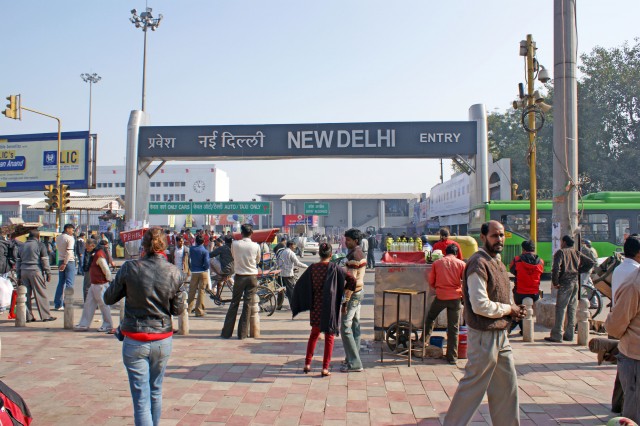New Delhi
NEW DELHI, by current estimates, has a population of about 300,000 persons, although Greater Delhi's population is estimated to be between 12 and 14 million, making it the third-largest urban settlement in INDIA. Located at the western side of the Gangetic Plain in India, New Delhi is also located next to the city of Delhi, often referred to as Old Delhi. Both of the cities, however, while being in proximity to each other, have very different histories and urban forms: Old Delhi is an urban sprawl filled with narrow, winding streets, forts, bazaars and mosques; the city was the Muslim center of India from the 17th to 19th centuries, although the origin of the present city begins in the 12th century. New Delhi, on the other hand, is greatly different because of its much shorter history and its urban morphology of a monumental context—broad, straight, tree-lined Baroque-style avenues, large-scale governmental buildings, and open spaces. While Old Delhi may be said to be chaotic in form and life, New Delhi is a place of order. Covering an area of almost 579 square mi (1,500 square km), New Delhi is a vast city in spatial extent.

In terms of its history, New Delhi's origins are closely associated with the rise of the BRITISH EMPIRE in India, the declining power of the Mughal Dynasty, and the British government's decision in the early 20th century (1911) to establish a new imperial capital city in India. The previous capital city was Calcutta in the northeast of the country. In January 1931, New Delhi was inaugurated as the new capital of India.
The task of planning and designing the new city was given in 1912 to architects Sir Herbert Baker and Edwin Lutyens (Lutyens was prominent in the development of the English vernacular house design, and Baker was an architect who had designed widely in colonial SOUTH AFRICA). The city plan of New Delhi is similar in form to 19th-century PARIS and Washington, D.C., having a geometric-shaped urban form dominated by long, wide avenues that lead up to nodes created by significant public buildings or spaces, such as the India Gate, the Parliament Building, and Rashtrapati Bhawan, the official residence of the president of India, once the British viceroy's house.
The most important of the city's roads is the Rajpath, a monumental boulevard used for ceremonial parades that provides a huge vista toward the former British buildings on the top of Raisina Hill. Architecturally, the grand edifices of the British were designed to explicitly show imperial power, hence classical forms were employed. Despite India gaining independence from the British in 1947, New Delhi's capital status was confirmed by the Indian government in 1950, and with its increasing size and cultural importance, the city was granted state status in 1992.
Today, Delhi, that is, Greater Delhi, is the richest city in India because of it is the economic, trade, and industrial center of northern India. Despite planning restrictions, the last decades have seen a major increase in industrial development; among the most important local products are chemicals, clothes, and electrical and electronic goods. Engineering and banking are also of growing significance.